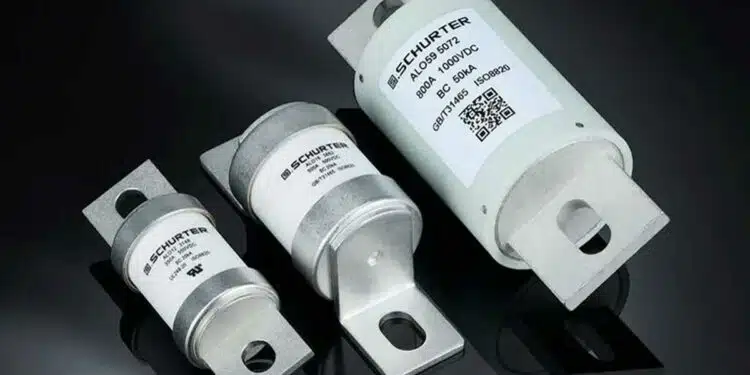The new SCHURTER high-performance ALO fuse series has been specially developed for high-voltage electric vehicle applications and covers voltages up to 1000 VDC and currents up to 900 amps.
With a high breaking capacity of up to 50 kA and the option of axial or bottom bolt-on mounting – available in either ceramic or resin housings – it offers maximum design flexibility.
The product line is available in a variety of voltage ratings from 250 to 1000 VDC and covers current ranges from 100 to 900 A. It is designed for an operating temperature range of -40 to +125 °C. The housing materials are ceramic or resin, and the end caps are made of a tin-coated copper alloy.
Wide Range
A key advantage of the series is its wide range of products, which covers different designs, voltages, currents, and mounting methods, significantly reducing design effort for customers. Its robust construction ensures reliability in harsh environments and minimizes the risk of housing cracks, terminal detachment, or resistance fluctuations. Safety is enhanced by proprietary filling and curing technology that prevents explosions, reduces fire hazards, and protects adjacent components from splinters.
Application Areas
Typical applications for the ALO series include PDUs, battery disconnect units, manual service disconnectors, all-in-one controllers, 2-in-1 electric drives, and battery management systems. The ALO series complies with the JASO D622, ISO 8820-8, GB/T 31465.6, and UL 248-20 standards, with the ALO11, ALO12, and ALO14 models already UL-certified.
This makes it a reliable choice for high-voltage protection in modern electric vehicle systems: powerful, safe, and customizable.
































